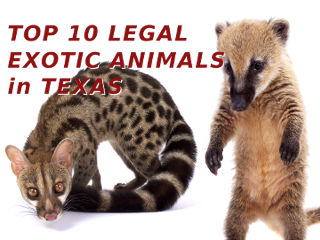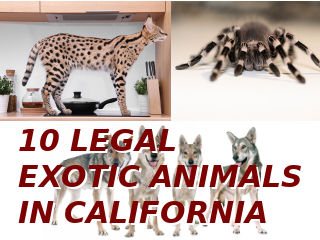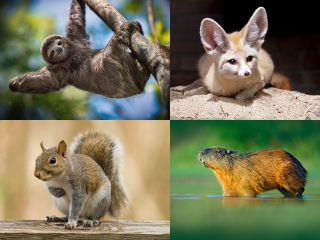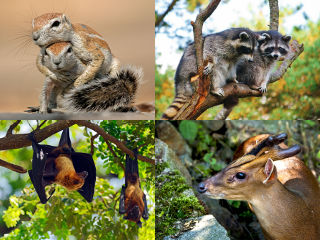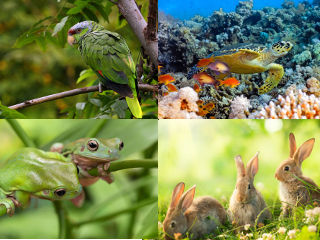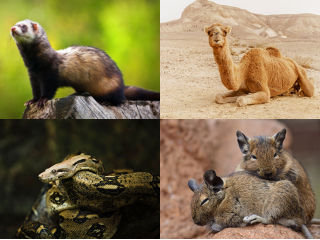There are many exotic animals in the world, but certainly, not all are able to be kept in captivity or as pets. Surprisingly, quite a few exotic animals are considered legal to own in New York State. Unfortunately, cities, townships, and counties may have their own rules regarding exotic animals, so it is necessary to dig a little deeper into the legality of owning some of these animals in certain areas of the state.
If any of the legal exotic animals on the list capture your attention, please continue to do thorough research to ensure you can meet the animals’ needs and requirements. Remember that any animal you bring under your care is a big commitment. But owning exotic animals in New York state can be a rewarding experience. Maybe, you’ll find just the exotic animal you’re looking for!
Capybara
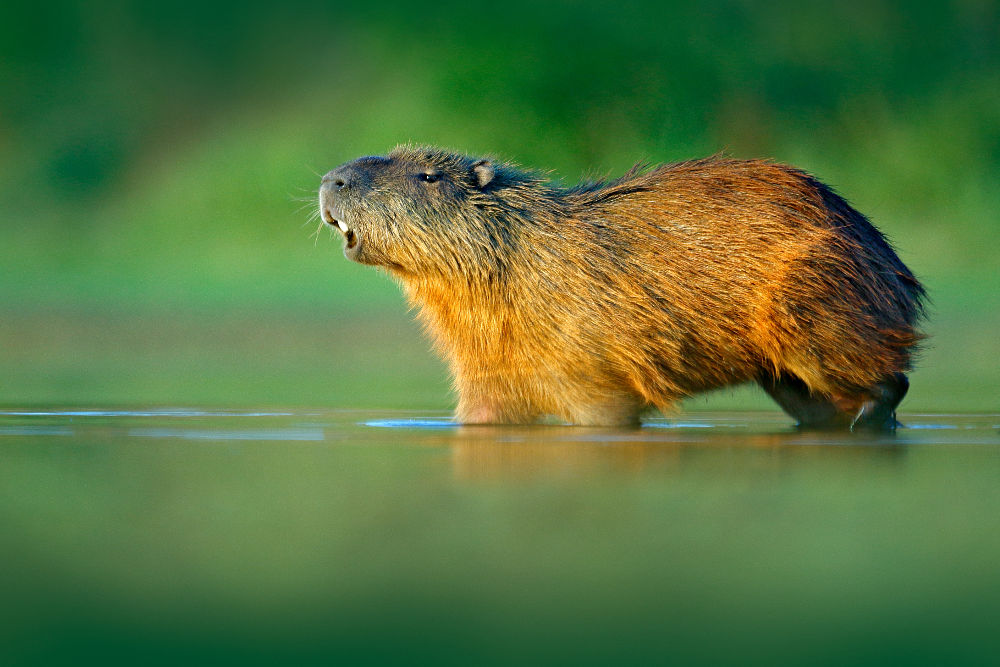
The capybara is an animal that is legal to own in New York State. It is sometimes referred to as simply being a giant guinea pig. Capybaras can weigh anywhere from 75-150 pounds! Capybaras are the world’s largest rodents. Though they are rodents, they are adorable and fun-loving animals.
Capybaras are normally found in South America and are considered semi-aquatic creatures. In fact, they have webbed feet, which help make them powerful swimmers. And they can even hold their breath underwater for as long as five minutes. Having a large source of water like a pool for the capybara to swim in is an absolute must. They require a lot of mental stimulation, so a good-sized pool, whether above or below ground, and plenty of toys to play with are important.
As mentioned earlier, capybaras are fun-loving creatures and are not solitary animals by any means. If you want to own a capybara, you’ll want to consider having at least two or a similar companion animal for your capybara. Capybaras can be a little shy of humans sometimes but usually warm up to their family. They still need animal companionship, though, to fulfill their needs.
If you are able to meet their needs and requirements, capybaras make quite loving, fun, and affectionate pets. Keep in mind that, like any animal, capybaras will react if they feel the need to defend themselves. Capybaras will use their sharp teeth to defend themselves if they feel threatened. Otherwise, they are not known for being aggressive animals.
To feed a capybara, orchard, or timothy hay is usually the best option. These provide the best nutrients and are tough to chew, which helps keep the animals’ teeth from becoming too long and overgrown. In the wild, capybaras eat a wide variety of plants, aquatic plants, and grasses. Both those in the wild and those kept as pets like to eat their own poo. This may seem gross, but it is part of their natural digestion process. If all the nutrients aren’t absorbed the first time around, the capybara will try again!
Fennec Fox
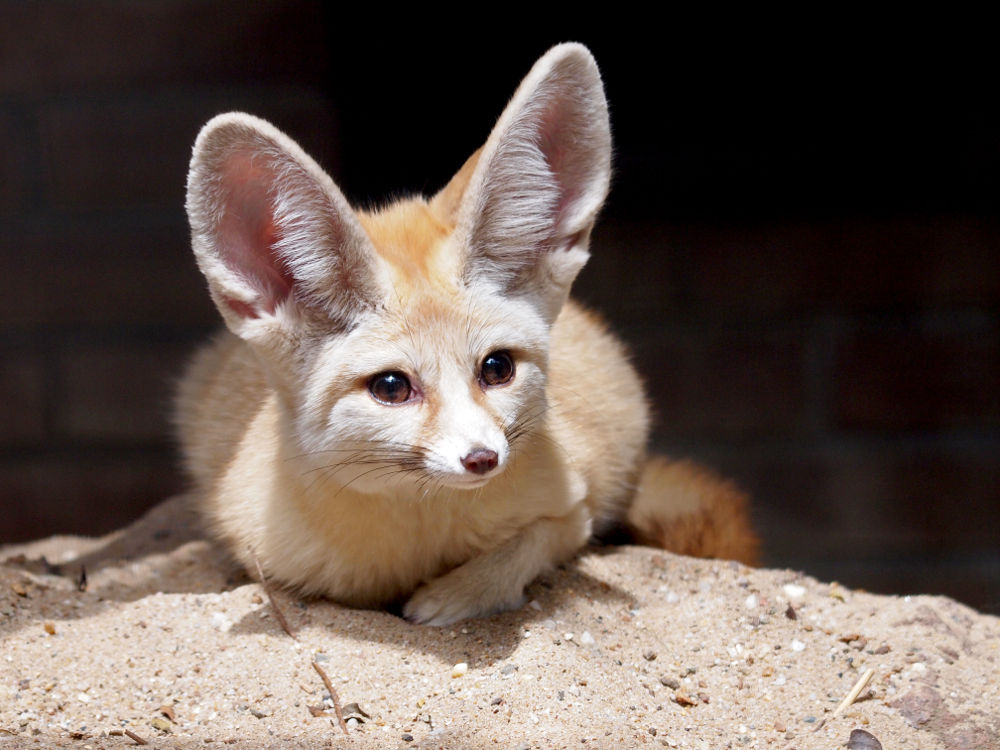
Fennec Foxes are an increasingly popular animal to keep in many states. They are the smallest members of the canids or dog family and usually are between 14-16 inches in length! Though an additional 7 to 12 inches can be added on just for their tails. They are native to the more arid desert regions of Africa and Arabia. One of the reasons they are so popular is because of their adorable looks. They have tiny bodies, but they sure do have large ears! Their oversized ears actually serve a purpose, though. It is believed they help to dispel the heat and even help them hear their prey and other predators.
They also have fur on the bottom of their feet, which helps to provide them with traction and helps protect their feet from the hot sand. Additionally, since they can get much of their hydration needs met through their food intake, they are perfectly suited for life in desert regions. They like to eat small rodents and lizards as well as small birds and eggs. They’ll sometimes eat the roots of plants, fruits, and leaves in order to get additional hydration.
Though they are incredibly cute, they don’t always make the best pets. They have extremely high amounts of energy and need tons of room to play, run, and explore. Even if they have all their needs met, they can be destructive animals and will chew on just about anything. They also can be aggressive towards other animals like dogs or cats when it comes to their food. In the event that they do bite, their bite is incredibly strong and powerful and can cause significant damage. Usually, it is recommended that they not be kept around children or other pets. They are also incredibly loud and noisy animals. They bark, growl, howl, whimper, and even shriek, squeak, and chatter.
Sloth

While sloths are legal to own in the state of New York, it is usually not recommended. They aren't nearly as loving or friendly as some of the other animals on this list. Being pet, held, or groomed is not on their list of favorite activities. Moreover, since they don't do well living in the house, they require a lot of highly specialized care and have extensive requirements for their ideal environment. These extensive requirements can add significantly to the cost of bringing home a sloth and maintaining its home.
Wild sloths are usually found in the hot, humid rainforests of Central and South America. While New York can get quite hot in the summer, it may be tricky to meet these animals' 90 to 100 degrees Fahrenheit temperature requirements in the winter months! They also require about 90% humidity. Because sloths are nocturnal, they sleep all day and are most active at night, so chances are you won't typically get to interact with them. They also need plenty of trees and branches to climb around on and hang from.
In their native environment, sloths eat a wide variety of leaves. But local leaves are not an acceptable substitute due to the risk of pesticides and chemicals. Instead, there is a leaf eater food that can be found in pellet or stick form. They also enjoy lettuce, the occasional apple, carrot, and dandelion greens.
Coatimundi
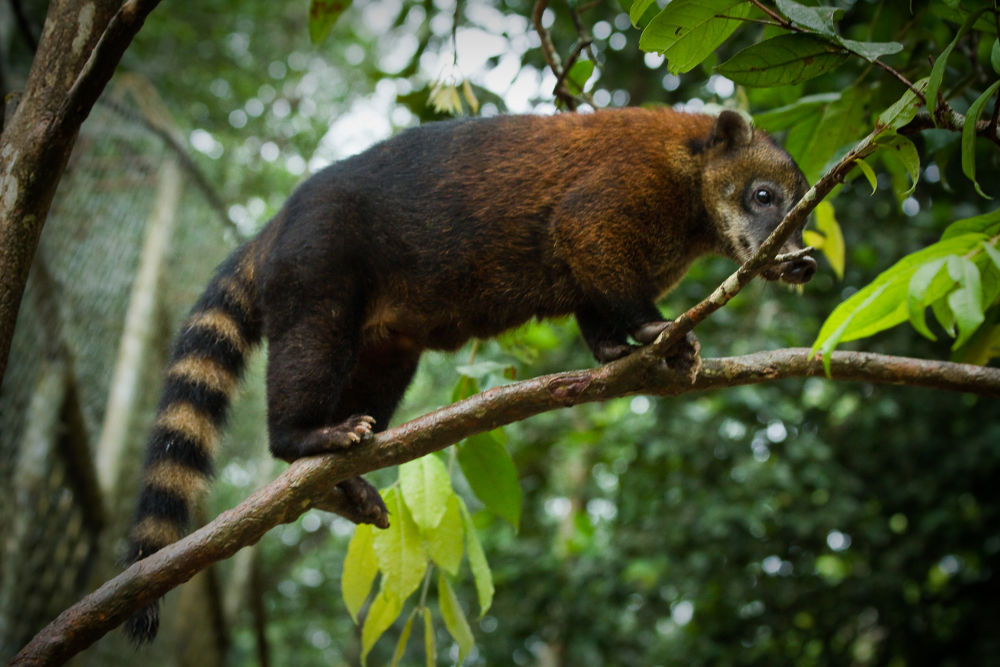
Coatimundi, sometimes affectionately called coatis, are intelligent but stubborn little animals. They are typically found in Central America and South America. These cute animals are a ton of work, though. They have a very specific diet, and their food needs to be scattered and hidden to help encourage their natural foraging instincts. The bulk of their diet in captivity, or 60%, can come from a high-quality grain-free dog food. It should contain 10 % of fresh fruit and 10% of fresh vegetables. And 20% of their diet should come from animal sources like poultry, beef, or eggs.
It is possible to train a Coatimundi to do most things a cat or dog can do, but it does take a great deal of patience. Sitting, lying down, using a litter box, and walking on a leash can all be taught, but it takes time. Since they can be destructive, you’ll also have to baby proof everything that coati has access to. Especially anything expensive or important to you since they have sharp claws and teeth! Additionally, it is not recommended to let coatis be around children as they can show aggressive tendencies, especially when they reach puberty or adulthood.
They can be spayed or neutered to help curb the aggression upon reaching adulthood. Unfortunately, because coatis are not very common, it can be difficult to find a veterinarian that specializes in their care.
Short - tailed opossum
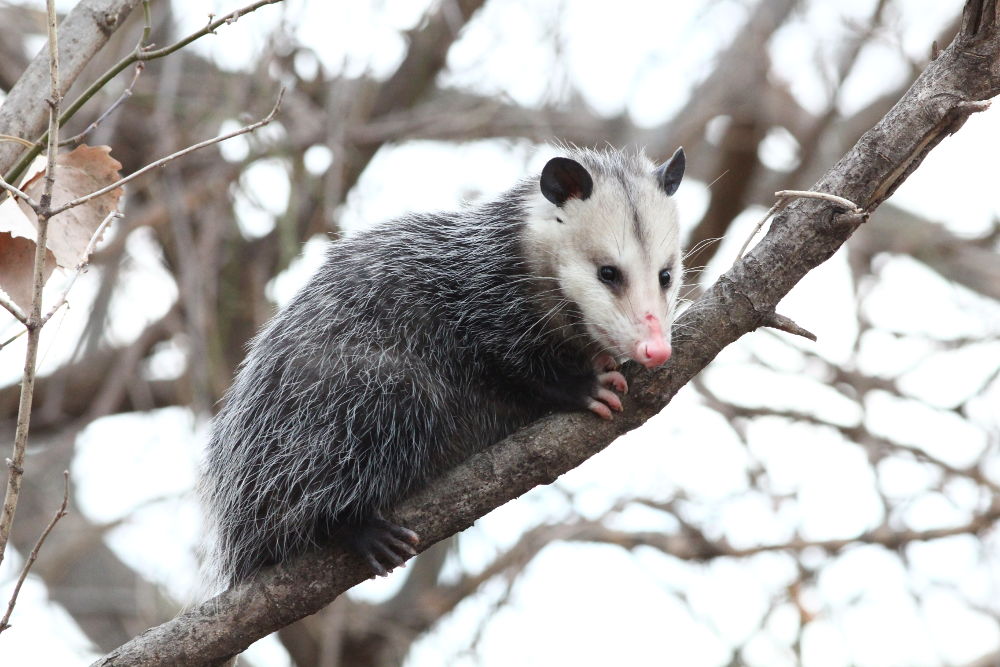
Short-tailed opossums are tiny marsupials that can typically be found in South America. They are becoming increasingly popular to keep as pets thanks to their curious and sometimes playful natures, their low odor and overall cleanliness, and their incredibly soft fur! However, they do have quite a few requirements that need considering before bringing them home as the new family pet.
They require a significant amount of space, with no less than a 20-gallon vivarium or tank. The more, the better, though, as these animals love to run and climb up high in the trees in their native regions. The higher, the better too, since these animals like to climb up high! They’ll need an exercise wheel to get their daily exercise. They also greatly benefit from plenty of hammocks, tunnels, pouches, hides, and other such furnishings to hide and play in. Fleece liners can make up the flooring of their habitat. They typically only eliminate in one designated area, so potty training is incredibly easy. All you have to do is put the litter pan where the opossum tends to relieve itself, and it will keep going in the same spot but in the litter pan.
They have some strict dietary requirements. They need a kibble or main food that is made up of at least 30% protein, 9-13% fat, and 5% fiber. It is also important to incorporate insects, small rodents, and fruits and vegetables. A favorite treat of theirs are yogurt drops. Unlike many animals, these creatures are solitary and prefer their own company. It is also important to remember that these little creatures are nocturnal, so they will be far more active at night than during the daytime hours.
Wallaby
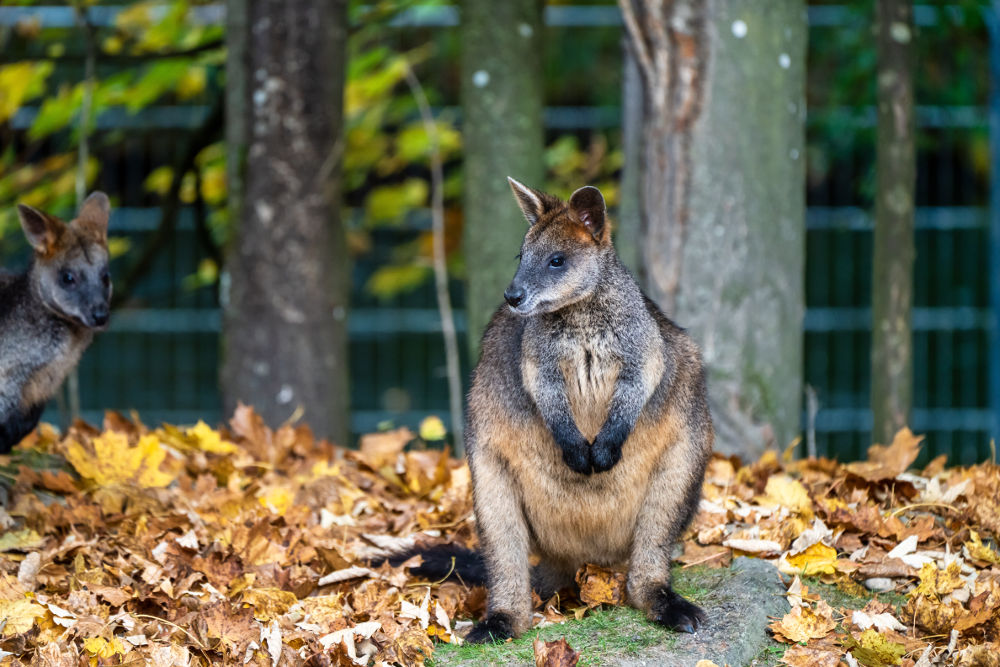
Since the wallaby is an exotic marsupial, it is legal to possess one in the state of New York. As cute as they are, unfortunately, wallabies just don’t make good pets. They can behave erratically when they feel confined to a home and cause significant damage to furniture, and risk injuring themselves. Additionally, they are not able to be potty-trained or house-trained. They also require unlimited access to fresh grass and a spacious enclosure that gives them plenty of room. They also have some interesting behaviors that may not bode well for the average pet owner. For example, as a means of cooling themselves down in hot weather, wallabies lick and salivate on the fur on their paws and arms. Additionally, it is not uncommon for wallabies to regurgitate their meals and then eat them again! Moreover, they are social animals who typically live in groups, so multiple wallabies would be a must. They cannot be around cats due to the risk of toxoplasmosis, a parasite that healthy cats can carry without symptoms but can prove deadly to wallabies.
Kangaroo
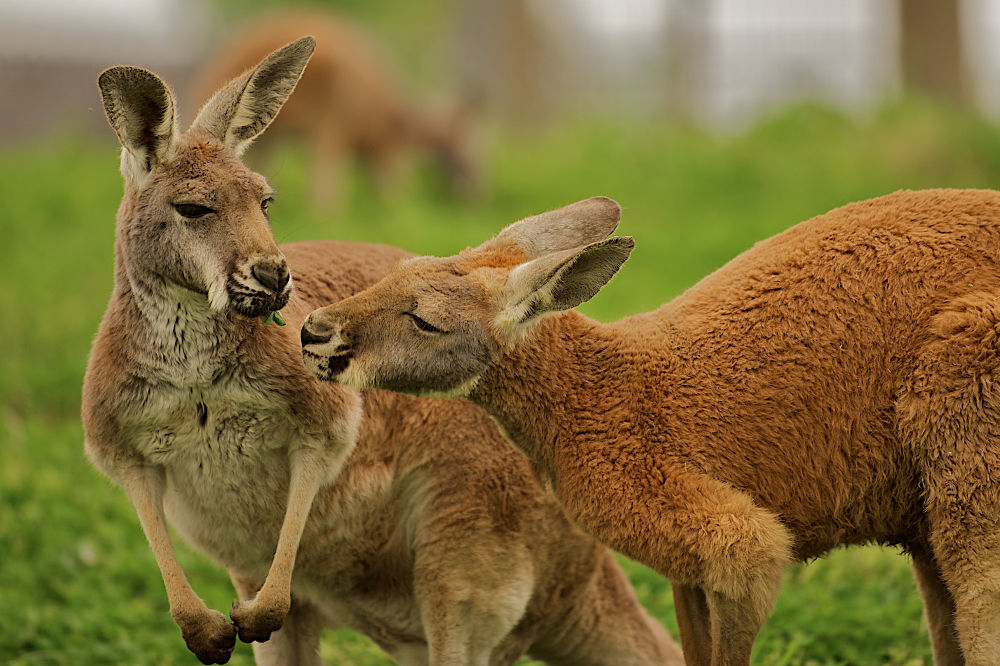
Similar to the wallaby, kangaroos are technically legal to own in New York State. These animals are large and stand at over 6 feet tall in most cases and weigh around 200 pounds. They are no house pet! They require tons of open space. They can jump as far as 30 feet in a single leap and can run at more than 30 miles per hour! Native to eastern Australia, these are typically social animals who live in herds or “mobs” of fifty or so kangaroos.
When threatened or facing a perceived threat, kangaroos can be incredibly dangerous animals. They will stomp their feet in a warning and hiss and growl but will absolutely use their powerful hind legs to attack and kick as well as bite. There are some places that keep kangaroos as farm animal types pets, but never as house pets. These kangaroos are usually fed a diet similar to what a horse might eat, like a high-quality broodmare diet and hay. They also enjoy the occasional apple or carrot!
Binturong
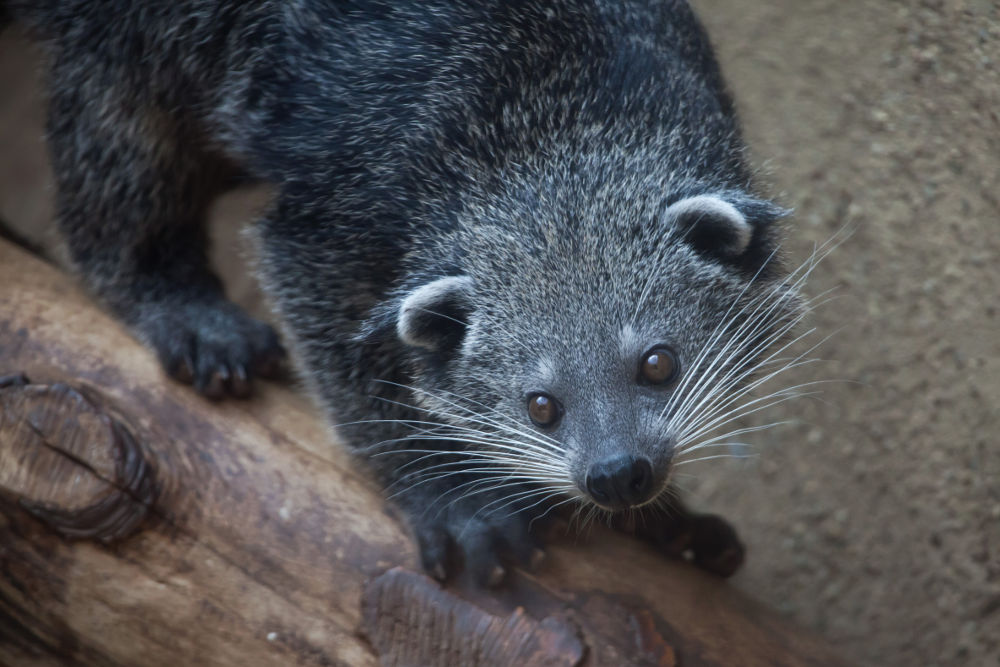
This unusual animal is sometimes referred to as a bearcat due to its slight resemblance to both, but it is neither! They are most closely related to civets, small nocturnal animals native to tropical forests, and fossas, a carnivore in Madagascar that is closely related to the mongoose! It is easy to understand the confusion, though, since their facial features like their nose and ears, and even their hair makes them look very bear-like. Their eyes, whiskers, ear tufts, and vocalizations are very cat-like. Binturongs are carnivores and sometimes eat small mammals, fish, and some birds, but their diet usually consists mainly of fruit.
They are typically about 2 to 2 ½ feet in length and weigh in at anywhere from 30 pounds to 60 pounds. There are a couple of really interesting facts about these animals. First, female binturongs can actually choose when their babies are born! Mating can take place at any time, but the female binturong can have delayed implantation, meaning that the birth of the offspring can be delayed until more favorable weather conditions.
Second, binturongs are nature’s gardeners. Thanks to their love of fruit, they often deposit fecal matter filled with the undigested seeds of the fruits they eat, helping to plant the seeds of their favorite foods. Lastly, since they are tree dwellers, they have the ability to actually turn their ankles 180 degrees so that their claws can still grip the tree as they are climbing both up and down the tree. They also tend to be very vocal animals. They make a snorting or chuckling noise when they are happy. Sometimes they can even be heard purring! And, of course, if upset, they howl, grunt, and hiss. They are quite expensive ranging from $2,000 to $5,000, especially since females are harder to come by than males. These animals also lead quite long lives, especially in captivity. In the wild their average lifespan is eighteen years.
And we can’t forget to mention one more fun fact about binturongs. They smell like popcorn! The molecule found in this scent is the same one found in buttery popcorn. Though it doesn’t come from a pleasant place! The smell is created by an oil gland located underneath the tail of the animal. The purpose of this smell is to discourage predators and to let other binturongs know that they are present.
Exotic Squirrels
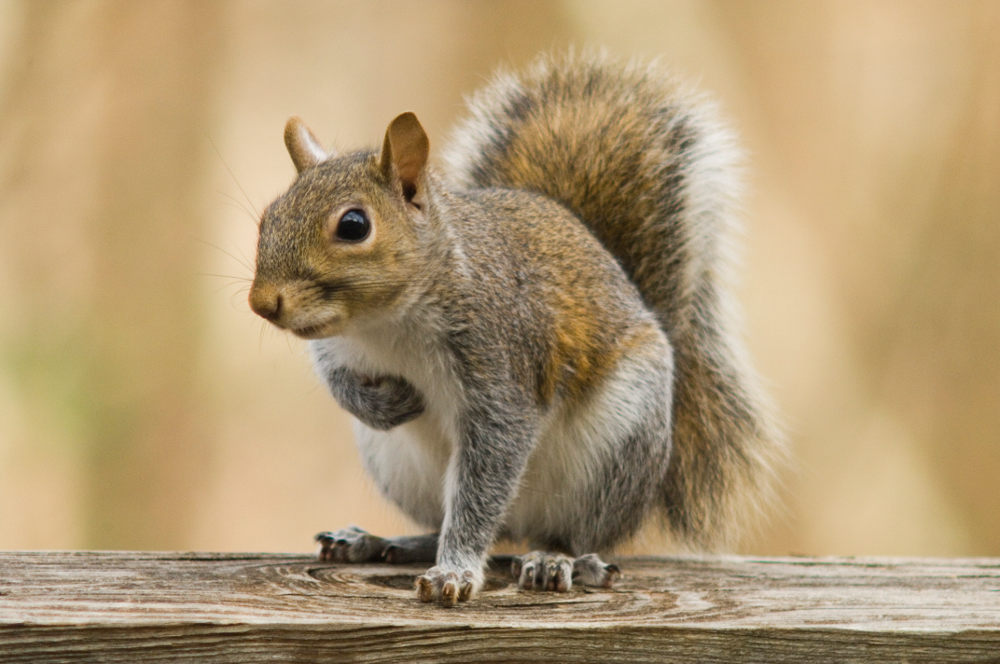
Interestingly, rodents like squirrels that are native to New York State are illegal to possess. They can only be cared for by a licensed wildlife rehabber. However, non-native, exotic squirrels are legal to own. A few examples of these squirrels are the Prevost’s squirrel of Southeast Asia, the Guayaquil squirrel native to Ecuador and Peru, and the Siberian chipmunk native to the regions of Russia and much of Asia.
In terms of appearance, the most unique or least similar to squirrels native to New York State is the Prevost’s squirrel, with its black, white, brown, or reddish-brown fur. Typically, these colors show in bands or segments, with the black color making up much of the head, back, and tail, the white making the middle, and the brown or reddish-brown comprising the belly, chest, and feet.
The Siberian chipmunk is probably one of the more popular of these to keep as a pet. They are incredibly cute but very busy animals since they like to keep gathering food even in captivity. When kept as a pet, most of these squirrels will use a corner of their cage or habitat as a toilet, so you can try placing a small litter pan or tray in that spot, and the squirrels should continue using it. This will make cleanup a little bit easier!
Though not legal to own in most places now, squirrels native to the United States used to be a popular type of pet for American colonial children and their families. As far as food is concerned, squirrels kept as pets today can eat a diet similar in nature to diets sold in pet stores for other pet rodents. However, it is important to add some fresh food and snacks into your pet’s diet. Keep in mind that processed food as well as soybeans, kidney beans, lentils, and other bean varieties are not a food that squirrels can tolerate so it is best to avoid these.
Porcupine

The porcupine is legal to own in the state of New York. While it may not be the best animal to cuddle with, there are some people that like to keep these interesting animals as pets. Of course, you’ll have to be careful to not frighten or startle the porcupine and make sure any other pets don’t either since they will absolutely use their quills as a form of self-defense. But with the training of your other animals, proper introductions, and spending time yourself with the porcupine, you may be able to live together peacefully.
Keep in mind that a common misconception about porcupines is that they can shoot their quills in the air. This misconception is simply not true. Instead, if a porcupine feels threatened, it will puff itself up in warning to make itself look bigger and threatening. If they still feel a threat, they will turn quickly and use their tail to whack the predator or other animal with their tail. Their tail is typically covered with up to 30,000 quills, so it is easy to see how several hundred could easily be driven into the skin of their predator. Since they are herbivores, they like to eat twigs, berries, leaves, roots, and any other kind of vegetation they can find. Some kept as pets in captivity even display dog-like behaviors like asking for pets, belly rubs, running around, and having zoomies!
Conclusion
Keeping exotic animals can be a fulfilling and unique experience. Still, it is important to make sure that if keeping exotic animals in New York state, all the laws are being followed. Even if the state allows for ownership of a certain animal, certain cities and counties may not. Be sure to do plenty of research to ensure the legality of your exotic pet before bringing one home. Also, be sure to learn all you can about your animal, so you’ll know if it is the right animal for you. Some of the animals on this list can be amazing pets, especially for the seasoned pet owner, as long as all the necessary steps are taken in advance. For the right owner though, an exotic pet may just complete an iconic duo!
FAQ
What animals does New York have?
New York State is home to a diverse range of wildlife species, including mammals, birds, reptiles, amphibians, and various marine life. Some of the more notable animals found in New York include:
White-tailed Deer,
Eastern Gray Squirrel,
Eastern Chipmunk,
Striped Skunk,
Raccoon,
Red Fox,
Coyote,
American Black Bear,
Eastern Cottontail,
North American River Otter,
American Beaver,
Common Muskrat,
Bobcat,
Moose,
Snowshoe Hare
Birds:
Red-tailed Hawk,
Bald Eagle,
Peregrine Falcon,
Great Blue Heron,
Common Loon,
Wild Turkey,
Northern Cardinal,
Blue Jay,
American Goldfinch,
Eastern Bluebird
Reptiles and Amphibians:
Eastern Garter Snake,
Eastern Box Turtle,
Common Snapping Turtle,
Spotted Salamander,
American Bullfrog,
Eastern Newt
What animal is most likely to kill you in New York?
While the likelihood of being killed by an animal in New York is relatively low, some animals can pose a threat to humans through bites, stings, or attacks. In New York, the animal that could potentially be the most dangerous is the American black bear.
American black bears can be found in forested areas throughout the state. Although they are generally not aggressive toward humans, black bears can become dangerous if they feel threatened or cornered, particularly when defending their cubs. Attacks on humans are rare, but caution should be exercised when in areas with known black bear populations.
Other potentially dangerous animals in New York include:
Eastern Timber Rattlesnake: A venomous snake that can deliver a painful and potentially dangerous bite if disturbed or threatened. However, they are generally shy and will avoid humans if possible.
Northern Copperhead: Another venomous snake that can be found in parts of New York. Like the rattlesnake, it will generally avoid humans, but its bite can be painful and require medical attention.
Coyote: While coyote attacks on humans are rare, they are known to occur occasionally. Coyotes are more likely to be a threat to small pets than to humans.
White-tailed Deer: Deer themselves are not aggressive, but collisions with deer on roadways can result in serious injuries or fatalities.

